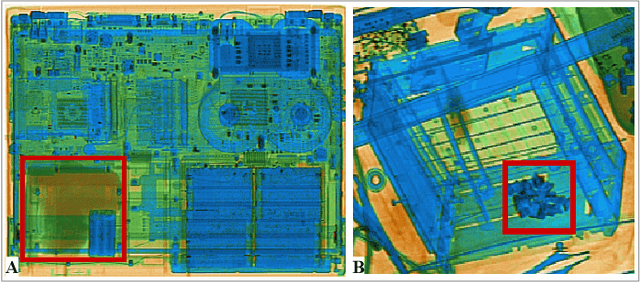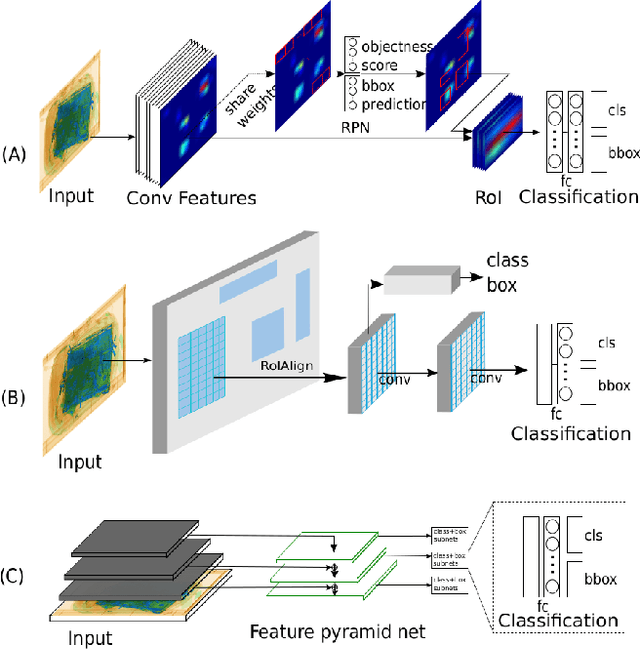Jack W. Barker
Lost in Compression: the Impact of Lossy Image Compression on Variable Size Object Detection within Infrared Imagery
May 16, 2022



Abstract:Lossy image compression strategies allow for more efficient storage and transmission of data by encoding data to a reduced form. This is essential enable training with larger datasets on less storage-equipped environments. However, such compression can cause severe decline in performance of deep Convolution Neural Network (CNN) architectures even when mild compression is applied and the resulting compressed imagery is visually identical. In this work, we apply the lossy JPEG compression method with six discrete levels of increasing compression {95, 75, 50, 15, 10, 5} to infrared band (thermal) imagery. Our study quantitatively evaluates the affect that increasing levels of lossy compression has upon the performance of characteristically diverse object detection architectures (Cascade-RCNN, FSAF and Deformable DETR) with respect to varying sizes of objects present in the dataset. When training and evaluating on uncompressed data as a baseline, we achieve maximal mean Average Precision (mAP) of 0.823 with Cascade R-CNN across the FLIR dataset, outperforming prior work. The impact of the lossy compression is more extreme at higher compression levels (15, 10, 5) across all three CNN architectures. However, re-training models on lossy compressed imagery notably ameliorated performances for all three CNN models with an average increment of ~76% (at higher compression level 5). Additionally, we demonstrate the relative sensitivity of differing object areas {tiny, small, medium, large} with respect to the compression level. We show that tiny and small objects are more sensitive to compression than medium and large objects. Overall, Cascade R-CNN attains the maximal mAP across most of the object area categories.
PANDA : Perceptually Aware Neural Detection of Anomalies
Apr 28, 2021



Abstract:Semi-supervised methods of anomaly detection have seen substantial advancement in recent years. Of particular interest are applications of such methods to diverse, real-world anomaly detection problems where anomalous variations can vary from the visually obvious to the very subtle. In this work, we propose a novel fine-grained VAE-GAN architecture trained in a semi-supervised manner in order to detect both visually distinct and subtle anomalies. With the use of a residually connected dual-feature extractor, a fine-grained discriminator and a perceptual loss function, we are able to detect subtle, low inter-class (anomaly vs. normal) variant anomalies with greater detection capability and smaller margins of deviation in AUC value during inference compared to prior work whilst also remaining time-efficient during inference. We achieve state of-the-art anomaly detection results when compared extensively with prior semi-supervised approaches across a multitude of anomaly detection benchmark tasks including trivial leave-one out tasks (CIFAR-10 - AUPRCavg: 0.91; MNIST - AUPRCavg: 0.90) in addition to challenging real-world anomaly detection tasks (plant leaf disease - AUC: 0.776; threat item X-ray - AUC: 0.51), video frame-level anomaly detection (UCSDPed1 - AUC: 0.95) and high frequency texture with object anomalous defect detection (MVTEC - AUCavg: 0.83).
On the Impact of Object and Sub-component Level Segmentation Strategies for Supervised Anomaly Detection within X-ray Security Imagery
Nov 19, 2019



Abstract:X-ray security screening is in widespread use to maintain transportation security against a wide range of potential threat profiles. Of particular interest is the recent focus on the use of automated screening approaches, including the potential anomaly detection as a methodology for concealment detection within complex electronic items. Here we address this problem considering varying segmentation strategies to enable the use of both object level and sub-component level anomaly detection via the use of secondary convolutional neural network (CNN) architectures. Relative performance is evaluated over an extensive dataset of exemplar cluttered X-ray imagery, with a focus on consumer electronics items. We find that sub-component level segmentation produces marginally superior performance in the secondary anomaly detection via classification stage, with true positive of ~98% of anomalies, with a ~3% false positive.
Evaluation of a Dual Convolutional Neural Network Architecture for Object-wise Anomaly Detection in Cluttered X-ray Security Imagery
Apr 10, 2019



Abstract:X-ray baggage security screening is widely used to maintain aviation and transport security. Of particular interest is the focus on automated security X-ray analysis for particular classes of object such as electronics, electrical items, and liquids. However, manual inspection of such items is challenging when dealing with potentially anomalous items. Here we present a dual convolutional neural network (CNN) architecture for automatic anomaly detection within complex security X-ray imagery. We leverage recent advances in region-based (R-CNN), mask-based CNN (Mask R-CNN) and detection architectures such as RetinaNet to provide object localisation variants for specific object classes of interest. Subsequently, leveraging a range of established CNN object and fine-grained category classification approaches we formulate within object anomaly detection as a two-class problem (anomalous or benign). While the best performing object localisation method is able to perform with 97.9% mean average precision (mAP) over a six-class X-ray object detection problem, subsequent two-class anomaly/benign classification is able to achieve 66% performance for within object anomaly detection. Overall, this performance illustrates both the challenge and promise of object-wise anomaly detection within the context of cluttered X-ray security imagery.
 Add to Chrome
Add to Chrome Add to Firefox
Add to Firefox Add to Edge
Add to Edge